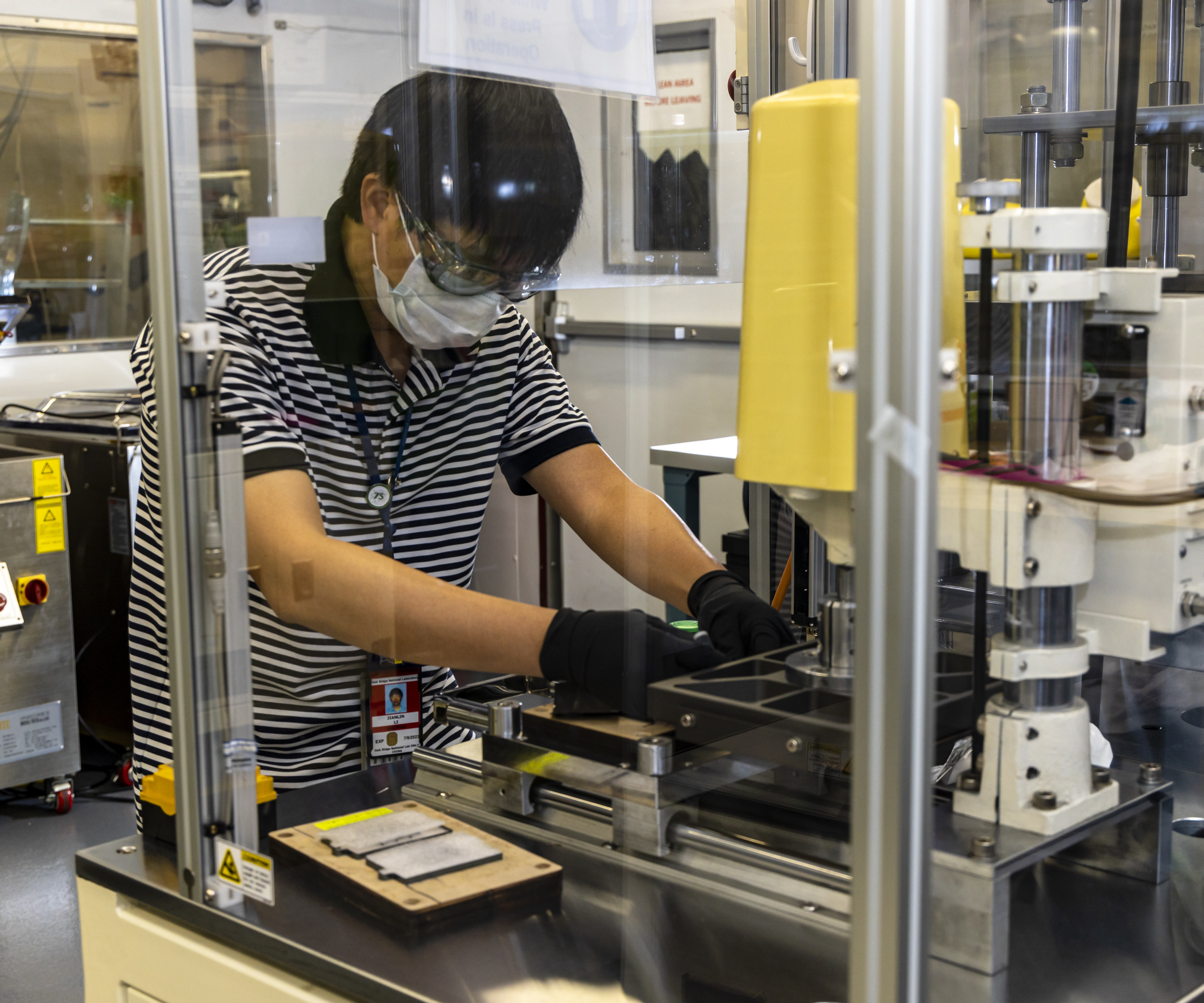ORNL’s technology, called fast formation cycling, reduces production time significantly and also enhances battery performance, which can lead to reduced costs.
With rechargeable batteries, electrolytes carry positive lithium-ions between the cathodes and anodes. These electrolytes are prone to decompose at the anode side. The formation of a solid electrolyte interphase layer, or SEI, prevents further decomposition on the anode surface during initial charging by providing a barrier with the electrolyte. This layer typically takes from several days to a week to form and involves putting the battery through several slow discharge and charging cycles that can lead to increased costs because of the need for significant capital investment.
ORNL’s new protocol for SEI formation includes more frequent and quicker charging and discharging cycles at higher voltages, demonstrating the capability for the rapid formation of a more robust and chemically stable SEI layer.
“The process for forming the SEI layer is costly and tedious because of the required slow discharging and charging rates,” ORNL researcher Jianlin Li said. “This formation protocol for fast rates reduces the time to form the SEI by 90% without significantly impacting performance.”
“ORNL’s fast formation cycling invention is necessary to meet industry needs and supports the increasing adoption of lithium-ion batteries,” SPARKZ CEO Sanjiv Malhotra said. “We are pleased to have the exclusive license on this technology, and it will further assist in our goal of enabling the industrial scale production of next generation batteries for electric vehicles and energy storage solutions.”
SPARKZ is evaluating a location for an R&D and prototyping facility in the United States to scale their licensed battery technologies to meet the demands of customers in the mobility and grid sectors.
This latest technology license builds on SPARKZ’s previous ORNL-developed licensed battery technologies.
DOE’s Office of Energy Efficiency and Renewable Energy, Vehicle Technologies Office supported the initial research that enabled this technology development. Inventors on the licensed technology include David Wood, Jianlin Li, Claus Daniel, Zhiiha Du and Seong Jin An.
For ORNL licensing information, contact www.ornl.gov/partnerships.
UT-Battelle manages ORNL for the Department of Energy’s Office of Science, the single largest supporter of basic research in the physical sciences in the United States. The Office of Science is working to address some of the most pressing challenges of our time. For more information, please visit energy.gov/science.



